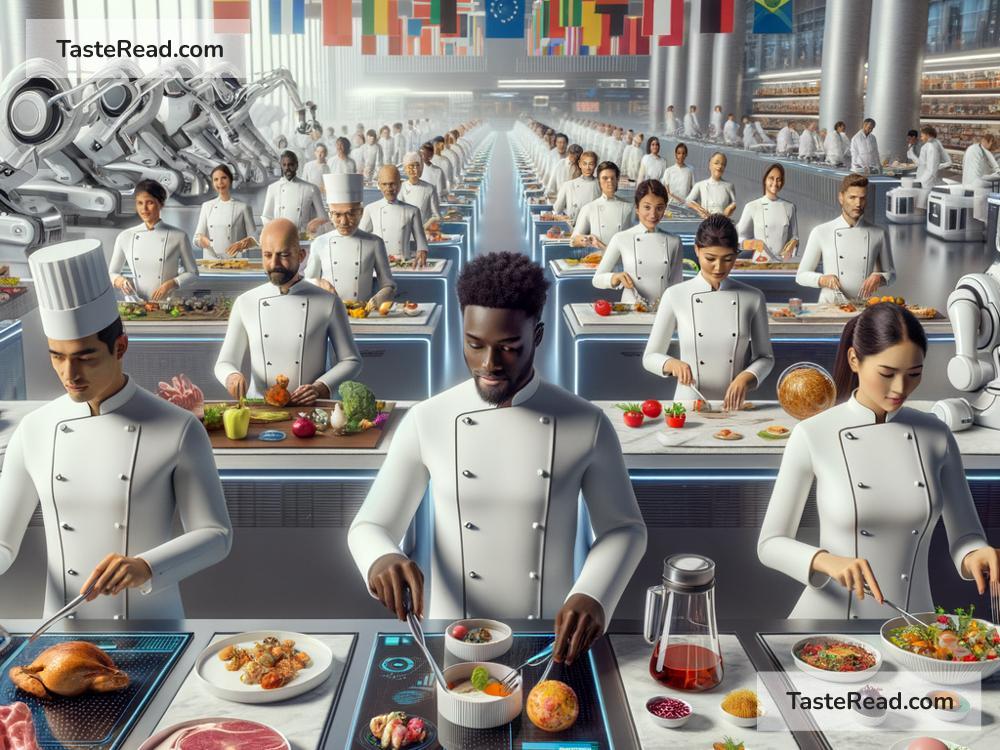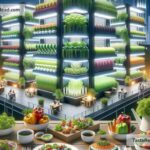The Future of Food and Building Inclusive Global Systems
Food is more than what we eat—it’s a cornerstone of human life, culture, and economy. As the global population grows and our world faces challenges like climate change, resource scarcity, and inequality, the future of food is becoming one of the most important conversations of our time. How can we ensure everyone has enough nutritious food, while protecting the planet? How can food systems become more inclusive and fair for people everywhere? Let’s explore these big questions in simple language.
Major Challenges in Food Today
The world’s food system is struggling in a few key areas:
-
Hunger and Malnutrition: Despite having enough food to feed everyone, nearly 800 million people go hungry every day, while others suffer from poor nutrition. This shows that food isn’t reaching everyone equally.
-
Environmental Impact: Agriculture uses large amounts of land, water, and energy. Farming practices like deforestation, overfishing, and intensive livestock production harm the environment and contribute to climate change.
-
Food Waste: About one-third of all food produced—around 1.3 billion tons—gets wasted. This happens at farms, stores, and in homes. Wasted food adds to environmental problems and robs people of resources.
-
Economic Inequality: Many small farmers (especially in developing countries) struggle to make a living, even though they grow much of the world’s food. Meanwhile, large corporations often dominate the industry, widening economic gaps.
Innovations Shaping the Future of Food
Thankfully, people around the world are coming up with innovative solutions to these challenges. Let’s look at a few exciting developments.
- Food Technology and Alternatives:
Advances in science are transforming what we eat and how we produce food. For example: - Plant-Based Foods: Companies are creating meat alternatives from plants, making food with less environmental impact. Brands like Beyond Meat and Impossible Foods are leading this trend.
- Lab-Grown Meat: Scientists can now cultivate real meat in labs using animal cells, reducing the need to raise and slaughter livestock. This technology has the potential to reduce land use and greenhouse gas emissions.
-
Vertical Farming: Growing food indoors in tall buildings, using controlled environments, allows crops to thrive year-round while using less water and land.
-
Smart Agriculture:
Farmers are using advanced technologies like drones, sensors, and AI to improve how food is grown. These tools can monitor soil health, improve yields, and reduce waste, helping farmers adapt to changing climates. -
Regenerative Agriculture:
Instead of farming methods that harm the soil and ecosystems, regenerative agriculture focuses on renewing the land. It promotes practices like planting diverse crops, composting, and protecting forests to help both farmers and nature thrive. -
Reducing Food Waste:
Creative solutions are being developed to tackle food loss. Apps like Too Good To Go connect consumers with restaurants and stores selling leftover food at lower prices. Governments and businesses are also launching campaigns to teach people how to store and use food wisely.
Building Inclusive Food Systems
Technology and innovation alone aren’t enough. To create a better future for food, the world needs to prioritize inclusivity—ensuring fairness and opportunities for everyone involved. Here’s how we can build more inclusive food systems:
-
Support Small Farmers:
Governments and organizations need to invest in small-scale farmers, especially those in developing nations. This can include providing affordable tools, seeds, and training programs. Small farmers grow much of the food that feeds the globe, but they often lack the resources to prosper or expand. -
Empower Women:
Women make up a significant portion of agricultural workers worldwide, yet they often have less access to land, funding, and education than men. Supporting women farmers can improve food production and build stronger communities. -
Make Food Accessible:
It’s crucial to make nutritious food affordable and available for everyone, regardless of income or location. Governments can subsidize healthy food, create social safety nets, and invest in programs like school meal initiatives to help vulnerable populations. -
Global Collaboration:
Food issues cross borders, so countries must work together. International organizations like the United Nations can help coordinate efforts and share knowledge on sustainable farming, reducing food waste, and fighting hunger. -
Include Marginalized Voices:
The people most affected by food challenges—small farmers, indigenous communities, and the underprivileged—must have a seat at the table during decision-making. Their experiences and insights are essential for building equitable systems.
A Hopeful Future
Imagine a world where every person has access to enough food, where farming works in harmony with nature, and where economic opportunities are shared equally. This vision may feel far off, but every step we take today—embracing innovation, supporting disadvantaged communities, and fostering global cooperation—brings us closer to it.
The future of food isn’t just about what’s on our plates. It’s about creating systems where everyone can thrive. By combining creativity, technology, and compassion, we can reimagine the way food is grown, distributed, and enjoyed across the world. This is not just a responsibility, but an opportunity to build a better future for our planet and everyone who calls it home.


